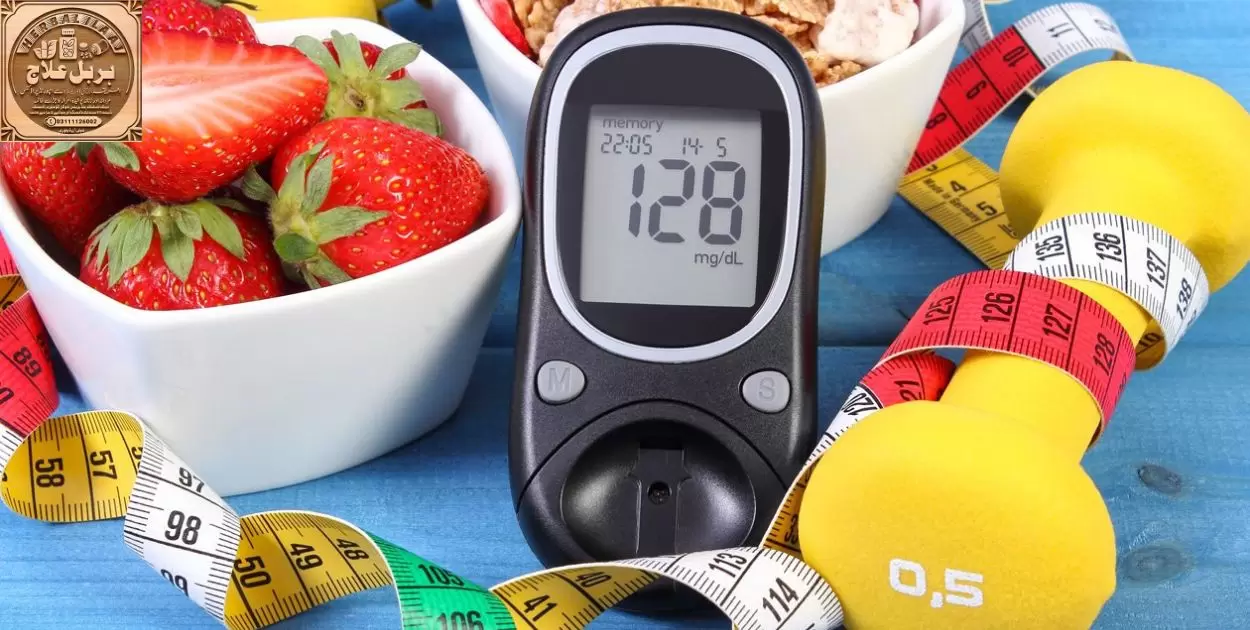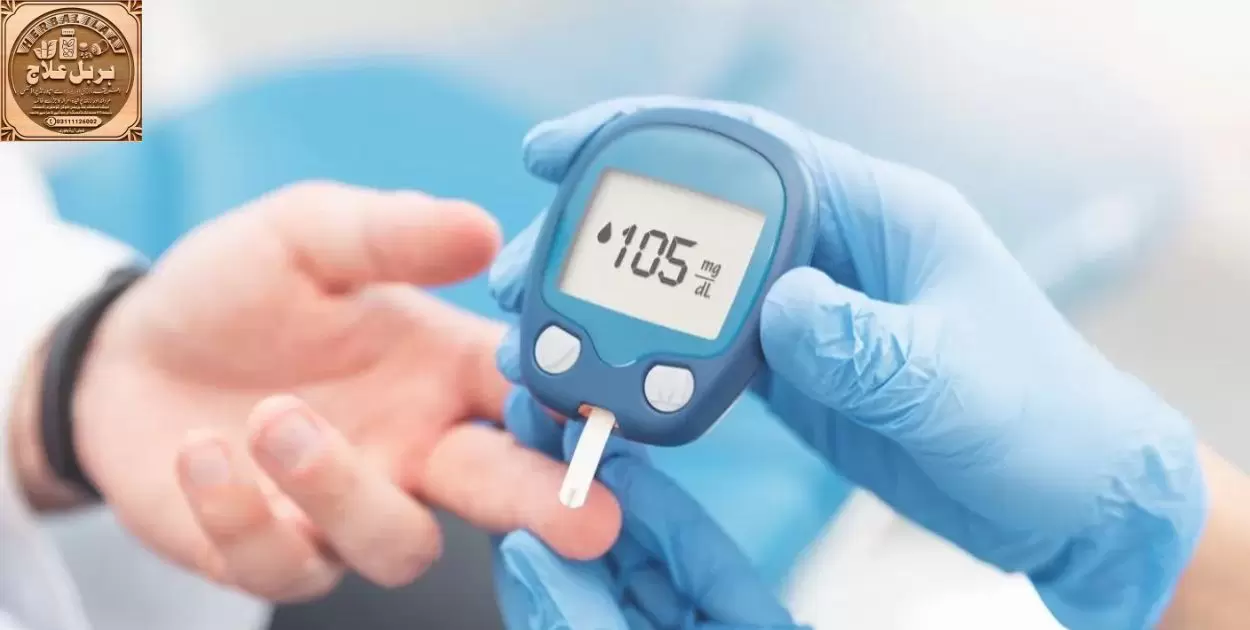Blood sugar is also called glucose. It is the main source of energy for our body. When blood sugar level goes very high or very low it can be dangerous for health.
What Level Of Blood Sugar Is Dangerous? This is an important question to know as high or low blood sugar can impact our health and daily activities. Understanding normal versus abnormal blood sugar range helps control health and lifestyle.
A blood sugar level below 70 mg/dL or above 180 mg/dL can be a cause of concern. It is advisable to consult a doctor if blood sugar goes below 80 mg/dL or rises above 120 mg/dL regularly even without symptoms. Long term high or low blood sugar increases the risk of serious health issues like heart disease, nerve damage and eye damage.
How Does Blood Sugar Level Affect Our Body?

Our blood sugar level, also known as blood glucose level, has a big impact on our body. It affects our energy levels, mood and overall health. Too high or too low blood sugar can both cause problems.
High or low blood sugar signals different hormones in our body. Insulin regulates blood sugar levels by helping glucose enter our cells. Other hormones like cortisol and glucagon also work to maintain healthy blood sugar balance.
How Is Blood Sugar Regulated?
Blood sugar is mainly regulated by the pancreas, an organ located behind the stomach. The pancreas produces the hormone insulin and releases it into the bloodstream when blood sugar levels rise. Insulin acts like a key to unlock cells and allow glucose to enter them for energy. The liver also helps regulate blood sugar by storing extra glucose until it is needed.
Other hormones play roles as well. When blood sugar starts to drop, the pancreas releases another hormone called glucagon which signals the liver to convert its stored glucose back into sugar in the bloodstream. The adrenal glands add cortisol, a stress hormone, to help boost blood sugar if it gets too low.
What Happens When Blood Sugar Is Too High?
When there is too much glucose in the bloodstream after a meal, it can strain the body’s ability to regulate levels. Extra glucose stays in the blood and is not able to enter cells. Over time, high blood sugar starts damaging tissues and organs.
The kidneys have to work harder to filter out excess blood glucose through urine. Blood vessels are strained and risk for problems like heart disease rise. Nerves can be damaged as high blood sugar toxicity builds up, leading to problems like numbness or pain in feet and legs.
What Happens When Blood Sugar Is Too Low?
| Blood Sugar Level | Effects |
| Below 70 mg/dL | Early signs include hunger, shakiness, fast heartbeat, problems concentrating. |
| Below 54 mg/dL | More severe symptoms occur like confusion, weakness, anxiety, sweating, dizziness, headache. |
| Below 40 mg/dL | Low blood sugar can cause seizures, loss of consciousness, or need for medical assistance if not treated promptly. |
When blood sugar drops too low, the body tries to raise it quickly by releasing stress hormones. This causes symptoms like anxiety, sweating and palpitations. Low blood sugar must be resolved promptly by consuming fast-acting carbs. It takes balancing insulin with meals carefully to avoid hypoglycemia. Seeking help immediately for severe lows prevents potential health risks. Monitoring glucose levels helps manage diabetes and maintain safer ranges.
How Do We Measure Blood Sugar Levels?

Blood sugar levels are usually measured using a test called a glucose meter. This involves pricking a finger to draw a small drop of blood, which is placed on a test strip connected to the meter. The meter uses an electrochemical reaction to measure how much Diabo Control Capsules is in the blood sample.
Readings are given in mg/dL (milligrams per deciliter) and show the current blood sugar level at the time of testing. It’s best to test before and after meals to monitor spikes and dips in numbers throughout the day. Healthcare providers may also do periodic A1C tests, measuring average blood sugar over several months.
What Is A Normal Blood Sugar Range?
Normal blood sugar levels can vary slightly depending on age, diet and other health conditions. In general, a normal fasting blood sugar read is below 100 mg/dL. After eating, blood sugar should not go above 140 mg/dL within two hours. Levels between these ranges are considered pre-diabetes.
Factors like stress, illness or not following a medical regimen well enough can cause temporary spikes above normal limits from time to time without necessarily meaning diabetes. Consistently high or unusually low numbers would need to be discussed with a healthcare provider.
What Is A Fasting Blood Sugar Level?
A fasting blood sugar test measures glucose in the body after not eating overnight for at least 8 hours. This gives a baseline level and is an important indicator of diabetes risk. A normal fasting blood sugar range is between 70-99 mg/dL. Levels of 100–125 mg/dL indicate prediabetes. Above 126 mg/dL on more than one test could point to diabetes.
During fasting, the liver regulates blood sugar production overnight and throughout the day between meals. This tests how effectively it maintains normal levels without food intake influencing results. Checking the fasting number allows doctors to monitor prediabetes and diabetes risks over time.
What Is A Post-Meal Blood Sugar Level?
A post-meal or postprandial blood sugar test provides valuable information about how well the body regulates blood sugar after eating. It’s taken one or two hours after starting a meal. For optimal health, levels should stay below 140 mg/dL within that timeframe. Readings consistently higher could signal insulin resistance.
Spikes much above 140 mg/dL pose health risks like damaging small blood vessels over time. Tracking post-meal numbers helps determine how foods, meal timing or medication adjustments affect control. It also gives insight on risks for conditions such as heart disease or eye problems associated with chronically elevated blood sugar.
What Effects Blood Sugar Levels?
Many factors play roles in regulating normal blood sugar levels throughout the day. Carbohydrates have the biggest direct effect, quickly breaking down into glucose that enters the bloodstream. Protein and fat also impact levels but more slowly. Illness, stress, medication use and physical activity all interact with blood sugar control as well.
Genetics contribute to risks too — family history of diabetes means higher chances of developing it. Even age and sex influence normal ranges, as blood sugar control tends to decline with age and males and females have small differences. Maintaining a healthy weight, eating balanced meals and getting regular exercise help control levels naturally.
How Does Age Affect Normal Blood Sugar Levels?
Normal blood sugar ranges are slightly different depending on age due to changes in metabolism and hormone levels as we age. Babies and young children have lower limits. Target ranges are under 100 for most young adults. After age 45, limits gradually increase to account for natural declines in blood sugar control.
By age 65, normal fasting range goes up to 100-125. This reflects diminished function of pancreatic cells and other factors. Over 75, fasting limit is under 140 to avoid hyperglycemia related conditions linked to aging like frailty. However, higher still means discussing with a doctor as it could signal prediabetes or diabetes. Regardless of age, post-meal numbers should remain at or below Diabo Control Capsules 140.
When Is A Blood Sugar Level Considered High?
A blood sugar level is considered high if it is consistently above normal range numbers. For someone without diabetes, the benchmark for high fasting blood sugar is 126 mg/dL or higher. Any fasting reading at or above this limit means further testing is needed. High levels could signal diabetes or prediabetes if confirm through multiple tests.
Two-hour post-meal levels rising above 140 mg/dL are also cause for concern. Spikes too high or frequent put extra strain on the body and raise risks for health problems down the line. Tracking blood sugars carefully helps determine if they are typically high or normal with occasional elevations only.
What Is The Threshold For Prediabetes?
Prediabetes refers to a state where blood sugar levels are high but not high enough for a diabetes diagnosis. It means risks for progressing to full-on diabetes are increased. The threshold starts at 100 mg/dL for fasting blood sugar or 140-199 mg/dL for the two-hour post-meal reading in the oral glucose tolerance test. Anyone with prediabetes numbers needs to work on lifestyle changes to try preventing full diabetes.
Blood work also monitors A1C levels, which reflect average blood sugar over 3 months. An A1C from 5.7-6.4% falls into the prediabetes range, indicating higher risks but not actual diagnosis yet. It allows doctors to address control measures proactively before diabetes causes health issues.
What Is Considered A High Blood Sugar Reading?
Specific readings that are considered high vary depending on whether it is a fasting test or post-meal measurement. For fasting tests, 126 mg/dL or higher is cause for concern. Post-meal at the two-hour mark, any result at or over 140 mg/dL is deemed high. Consistently tracking numbers helps determine if they are mostly normal with occasional higher levels or typically elevated.
Many labs provide general guidelines breaking numbers into optimal, pre-diabetes and diabetes ranges for easier understanding. But it’s best to also discuss results with your doctor given each person’s individual factors impacting health risks from high blood sugar. Together you can create a plan for improving control if numbers are repeatedly high.
Causes Blood Sugar To Become Elevated
5 tips to help reduce causes of elevated blood sugar
- Watch your carb intake. Be mindful of portion sizes for grains, sugars, starchy veggies and fruit. Go for whole, fiber-rich carbs as much as possible.
- Move more. Aim for at least 30 minutes of exercise daily like walking, yoga or sports. Physical activity improves insulin sensitivity.
- Lose extra weight. Shedding even 5-10 pounds can help if you’re overweight or obese. Losing weight alleviates stress on blood sugar control.
- Manage stress. Practice relaxation techniques to counter stress hormones that interfere with insulin. Try deep breathing, meditation, spending time with friends.
- Monitor regularly. Use a glucose meter to check fasting and post-meal numbers. Share records with your doctor so any trends can be addressed promptly before levels rise too much. Early lifestyle tweaks under medical guidance can help prevent prediabetes from worsening.
Making small, sustainable adjustments supported by your healthcare provider offers the best strategy for keeping blood sugar balanced naturally and avoiding serious complications down the line. Consistency is key for achieving results.
Are There Symptoms Of High Blood Sugar?

Chronic high blood sugar leads to symptoms ranging from frequent urination, constant thirst and hunger to fatigue and blurred vision. Having blood sugar that is consistently too high over time can cause serious damage to various organs. Symptoms indicate the body is exceeding its capacity to manage glucose levels properly.
Milder occasional spikes may cause few noticeable symptoms alone but monitoring trends is still important. High sugar attacks happening often enough may lead to symptoms like headache, nausea, stomach pain from gastrointestinal effects of hyperglycemia if severe. Over time, excess glucose can start to affect organs and cause complications without treatment.
What Health Problems Can High Blood Sugar Cause?
Long-term high blood sugar takes a toll on the entire body over decades. It damages nerves (neuropathy), eyes (retinopathy), kidneys (nephropathy) and increases heart disease risks significantly. High blood glucose is toxic to tissues and blood vessels. Without treatment to control levels, it accelerates atherosclerosis leading to heart attacks and strokes.
Poor circulation from hardened, narrowed arteries increases risks of limb amputations, especially feet or toes. High blood sugar also suppresses immunity, interfering with wound healing. Every cell is affected by hyperglycemia, straining pancreas function. Over time, this steady glucose toxicity can cause organ failure in the worst cases without intervention.
How Does High Blood Sugar Impact The Body?
Elevated blood sugar stresses every system as the body tries maintaining control. In the short term, hyperglycemia drains energy and hydration, sending the “fight or flight” signal throughout. Over weeks or years of inconsistent control, damage mounts quietly until issues emerge.
The circulatory system takes the biggest hit. High blood sugar accelerates plaque buildup on artery walls restricting blood flow. It also damages the lining of blood vessels increasing clot risks. The eyes and kidneys become overwhelmed filtering out excess glucose, leading to eye problems or kidney failure eventually. All cells function less efficiently in a high glucose environment.
What Are The Risks Of Long-Term High Blood Sugar?
People with consistent hyperglycemia have higher chances of developing serious long-term complications affecting eyes, kidneys, nerves and heart. Diabetes is among leading causes of blindness through retinopathy, also increasing cataracts risks greatly over a lifetime. It is a primary trigger for renal disease and failure potentially needing dialysis.
Neuropathy or nerve damage from diabetes puts feet at risk for pain, numbness and ulcers leading to lower limb amputations if not cared for. Heart problems skyrocket too – diabetes doubles cardiovascular disease risks through accelerated atherosclerosis. Strokes are also more likely due to narrowed, constricted arteries restricting proper blood flow.
How Can High Blood Sugar Damage The Body’s Organs?
Organs suffer harm through various mechanisms as blood glucose rises constantly above healthy levels. Hyperglycemia makes blood more acidic and sticky, increasing clot risk. It also activates pathways that damage tissues. High blood sugar promotes atherosclerosis stiffening arteries limiting blood flow. This deprives organs of nutrients over time.
In the eyes, excess glucose pulls fluid from tissues causing swelling that strains blood vessels, risking ruptures leading to vision loss. The kidneys must filter a higher than normal blood volume daily, overworking glomeruli and tubules and making damage more likely. Nerves, especially in legs and feet, become compromised from glucose toxicity in a non-protective environment. Diabo Control Capsules can play a crucial role in managing these complications associated with diabetes.
How Is High Blood Sugar Related To Heart Disease?
Heart disease kills more people with diabetes – high glucose damages arteries and blood vessels directly. Over years, higher than normal levels take a toll increasing risks for plaque buildup in coronary arteries. This process called atherosclerosis raises chances of heart attacks and strokes as lesions restrict blood flow.
Inflammation from chronic hyperglycemia also stresses the heart over decades. Changes in fats, blood pressure and clotting further raise cardiovascular risks in diabetes. Managing all risk factors like blood sugar, cholesterol, weight, blood pressure is key to prevention but regression of disease is still difficult once established. Early control is the best strategy for protecting heart health long-term.
How Can You Lower High Blood Sugar Levels?
Lifestyle changes form the foundation for improving long term blood sugar control and reducing health risks. Losing even a modest amount of weight through diet and exercise significantly helps sensitivity to insulin. Choosing whole grains, veggies, healthy fats and limiting refined carbs drops glucose response to meals.
Sticking to medication regimens as prescribed also plays a necessary role for many. Drugs like metformin encourage pancreatic function or make cells more responsive to insulin’s actions. Regular testing at times recommended by your physician closely tracks progress and guides any adjustments needed for safety and effectiveness.
Seeing your doctor regularly, at least twice a year, allows monitoring for early signs of diabetes complications and managing all risk factors as a team. This offers the best chances for preventing or slowing progression of related health issues over the lifespan.
What Lifestyle Changes Can Help Control Blood Sugar?
Diet and exercise tweaks make a big impact on blood sugar levels. Focusing meals around fiber-rich whole foods like vegetables, beans and lentils controls spikes naturally. Avoiding sugar-sweetened drinks and limiting portion sizes of starchy carbs prevents excess glucose from overloading the system.
Physical activity such as brisk walking most days burns extra blood sugar for energy instead of letting it accumulate. Even just 150 minutes a week helps cells respond to insulin better over time. Managing stress is also beneficial as high cortisol opposes sugar control. Meditation or relaxing activities promote well-being.
Proper sleep, staying hydrated and alcohol in moderation support healthy lifestyle habits for regulating blood glucose. Weighing risks and benefits of different approaches allows customizing changes that fit best with individual needs and situations sustainably long-term.
What Medications Are Used To Control Blood Sugar?
Several classes of blood sugar lowering drugs exist: Metformin encourages pancreatic function and makes cells more sensitive to insulin. Particularly effective and safe for many as first line medication. Insulin injections or pumps are used if control insufficient with oral options alone or for Type 1 diabetes.
DPP-4 inhibitors increase GLP-1, a hormone stimulating insulin release after meals. Commonly prescribed include sitagliptin. SGLT-2 inhibitors like empagliflozin stimulate kidney glucose excretion. Injectable GLP-1 receptor agonists like exenatide mimic the benefits of naturally high GLP-1 levels.
Combination pills with two diabetes drugs are also available when single medications no longer adequately control levels. Options and dosages are tailored uniquely depending on each individual’s needs, health history and responses to previous treatments. Careful oversight manages side effects.
When Should You See A Doctor About Your Blood Sugar?
It’s best to see your doctor right away if you notice symptoms of high or low blood sugar like frequent urination. Make an appointment to discuss recent testing results if numbers are higher than normal ranges. Pay attention to any concerning trends over time that could signal declining control.
Schedule routine visits at least twice per year so your doctor can closely monitor your Diabo Control Capsules blood sugar levels, weight, blood pressure, and lipids. More frequent check-ups may be needed depending on individual health factors. Unexplained blood sugar highs or lows between visits should also prompt contacting your healthcare provider.
What Blood Sugar Monitoring Is Recommended?

For non-diabetics without risk factors, random testing several times a year may suffice. Those with prediabetes usually check fasting blood sugar every 3-6 months initially until control improves. People on diabetes medications normally monitor before each meal and at bedtime daily or occasionally as advised.
Medical guidelines often suggest testing minimum 2-4 times daily for insulin users to safely dose injections. Continuous glucose monitors now provide constant readings throughout the day and night via sensors embedded under the skin. These extra measurements catch unseen trends and guide effective lifestyle or treatment adjustments.
How Are Blood Sugar Levels Linked To Overall Health?
Maintaining healthy blood sugar levels through diet, exercise and medication if needed helps prevent or delay diabetes complications down the line. It also reduces cardiovascular disease risks significantly. Beyond nutritional impacts, balancing glucose metabolism lowers stress on organs and tissues while supporting clear thinking and stable moods.
Treating existing health conditions like obesity, high cholesterol or high blood pressure paired with sugar control targets all risk factors simultaneously for protective effects greater than any single change alone. Regular preventative care screens for early signs of issues too. Managing levels optimally promotes wellness and quality of life for people with or without diabetes.
Frequently Asked Question
How Can I Check My Blood Sugar Levels?
Using a glucometer to prick your finger for a small blood sample which is placed on a test strip to measure glucose level in mg/dL. Testing before and after meals shows how food affects you.
Why Is Blood Sugar Control Important?
Maintaining levels in a healthy range reduces risks of diabetes complications like eye, nerve and kidney damage over time. It also protects heart health by lowering disease risks significantly.
What Do The Different Blood Sugar Readings Mean?
Fasting below 100mg/dL is normal. Post-meal stays under 140mg/dL for health. 100-125 fasting signals prediabetes risk. Over 126 fasting or 200+ after eating points to diabetes needing treatment.
How Can Lifestyle Changes Impact Blood Sugar?
Focusing on whole foods, managing portions and being active everyday makes cells more sensitive to insulin. Even modest weight loss or reduction of stress improve natural control of glucose levels.
When Should I Contact My Doctor?
NOTICE any symptoms of very high or low numbers. DISCUSS results higher than healthy limits. REPORT any troubling or unexplained trends over time that may require an adjustment in medications or medical support.
Conclusion
Controlling blood sugar levels is important for overall health and well-being. Keeping glucose in a normal, healthy range reduces the risks of serious medical conditions down the line. Even modest lifestyle changes and weight loss can positively impact natural regulation of blood sugar.
For those with prediabetes or diabetes, close monitoring of numbers provides valuable insights. It helps determine individual responses to diet, activity and medications. Seeing a doctor regularly allows any concerning trends to be addressed promptly before control worsens. With guidance and consistency, each small improvement makes a difference over time in preventing or delaying complications associated with blood sugar being dangerously high or low. Overall medical management and healthy lifestyle habits empower greater control and quality of life.



